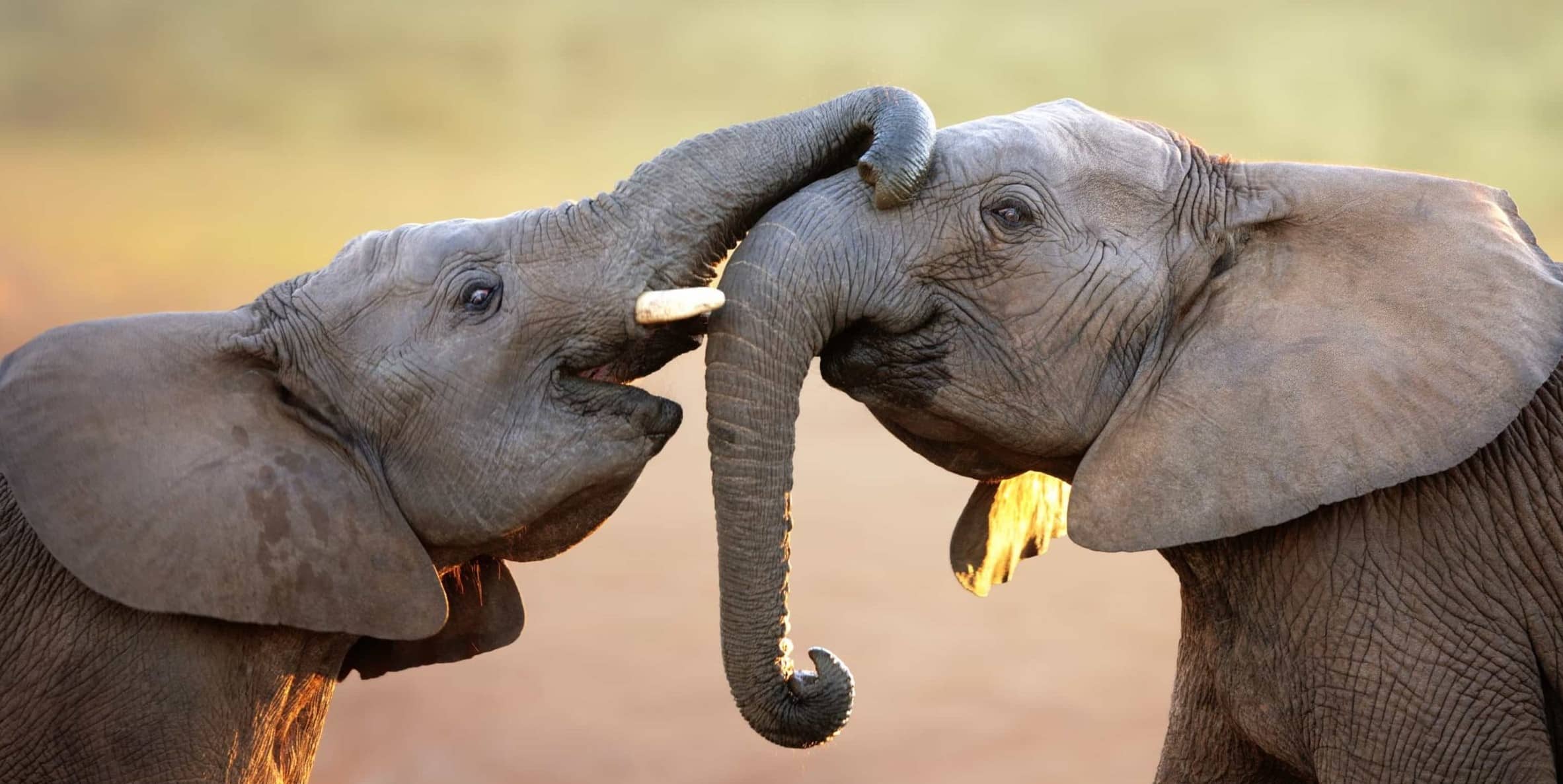
Animal communication is a fascinating and intricate field that sheds light on how different species interact and convey information with one another. From the songs of birds to the complex signals of dolphins, animals have developed diverse and astonishing ways to communicate. Understanding the intricacies of animal communication not only provides insights into their social structures and behaviors, but also uncovers the vastness of the natural world. In this article, we delve into 20 astonishing facts about animal communication, exploring the diverse methods, surprising abilities, and unique adaptations that various species have developed to express themselves. So, let’s embark on this journey to discover the incredible world of animal communication!
Key Takeaways:
- Animals communicate in fascinating ways, from dolphins’ clicks to bees’ waggle dance. Understanding their language helps us appreciate their unique abilities and their role in the natural world.
- Different species use vocalizations, body language, and even bioluminescence to convey messages. Studying animal communication gives us insights into their social structures, interactions, and survival strategies.
Dolphins use a complex system of clicks and whistles to communicate.
Dolphins are known for their exceptional communication abilities. They produce a wide range of clicks and whistles, which they use to convey messages to other members of their pod. These sounds are believed to play a crucial role in coordinating group movements and locating prey.
Bees perform a “waggle dance” to communicate the location of food sources.
Bees have a unique way of sharing information about the location of food. They perform a waggle dance, where they move in a figure-eight pattern and communicate the distance, direction, and quality of the food source to other bees in the hive. This dance serves as a form of navigation for the colony.
Elephants use infrasound to communicate over long distances.
Elephants are capable of producing low-frequency sounds, known as infrasound, that can travel for several miles. By emitting these deep rumbles, elephants can communicate with other individuals who may be far away. This form of communication helps to maintain social bonds within elephant herds.
Wolves use howling to communicate territory boundaries.
Howling is a prominent form of communication among wolves. By howling, they can announce their presence, assert territorial boundaries, and locate other members of their pack. Each wolf has a unique howl, enabling pack members to identify one another even from a distance.
Ants communicate through the use of chemical pheromones.
Ants rely heavily on chemical signals known as pheromones to communicate with their colony members. These pheromones help ants mark trails, identify food sources, and coordinate various tasks within the complex social structure of the ant colony.
Chimpanzees have a diverse repertoire of vocalizations.
Chimpanzees are known for their sophisticated vocal communications. They possess a wide range of calls, including alarm calls, greetings, and warning signals. Chimpanzees can also use gestures and facial expressions to convey messages to their fellow group members.
Birds sing complex songs to attract mates and establish territories.
Many bird species use elaborate songs to communicate with potential mates and establish their territories. These songs serve as a way for birds to advertise their fitness and attract a suitable partner. Each species has its own unique song patterns.
Meerkats use different alarm calls for specific predators.
Meerkats are highly social animals that live in groups called mobs. They have distinct alarm calls for different predators, such as snakes, birds of prey, and mammals. These specialized calls help the mob members identify the type of threat and respond accordingly.
Whales communicate through complex patterns of songs.
Whales produce intricate songs that consist of various patterns and sequences. These songs can travel long distances underwater and are believed to play a role in navigation, social bonding, and attracting potential mates. Different whale species have their own unique repertoire of songs.
Gorillas use a combination of vocalizations and body language to communicate.
Gorillas have a diverse range of vocalizations that they use to express their emotions and communicate with other members of their group. They also rely on subtle body language cues, such as facial expressions and postures, to convey messages and maintain social harmony within the troop.
Cats communicate through a combination of vocalizations and body language.
Cats have a wide range of vocalizations, including meowing, purring, hissing, and growling, which they use to communicate with humans and other cats. They also utilize body language signals, such as tail movements and ear positions, to express their different moods and intentions.
Octopuses can change the color and texture of their skin to communicate.
Octopuses are masters of camouflage and can change the color and texture of their skin to blend in with their surroundings. They use these visual displays to communicate with other octopuses, express their emotions, and even warn off potential threats.
Honeybees communicate the location of food sources through a dance.
Similar to bees, honeybees perform a dance known as the “waggle dance” to communicate the location of food sources to their hive mates. By dancing in specific patterns and angles, they provide directions and information about the distance and quality of the food source.
Bats use echolocation to navigate and communicate.
Bats emit high-frequency sound waves and listen to the echoes bouncing off objects to navigate their surroundings. This echolocation system also allows them to communicate with other bats by emitting specific vocalizations that carry information about prey, mating, and social interactions.
Prarie dogs have a complex system of vocalizations to warn of approaching predators.
Prarie dogs have an extensive vocabulary of distinct calls, enabling them to communicate specific information about potential dangers. They warn the colony about approaching predators by emitting different alarm calls that vary depending on the type and level of threat.
Elephants can communicate through seismic vibrations in the ground.
Elephants have the ability to detect and interpret seismic vibrations through their feet and trunks. They can communicate with distant elephants by producing low-frequency rumbles that travel through the ground, allowing them to coordinate their movements and stay connected.
Fireflies use light signals to attract mates.
Fireflies produce bioluminescent light signals, known as “flashes,” to attract potential mates. Each species of firefly has its own unique pattern and timing of flashes, making it easier for individuals to identify and find suitable mates in the dark.
Antarctic penguins communicate with specific calls to locate their partner in large colonies.
In crowded penguin colonies, individual penguins use specific vocal calls to locate their partners amidst thousands of other birds. These distinctive calls allow them to maintain their pair bond and reunite after foraging trips or when returning to breeding grounds.
Bearded dragons use complex body language displays to communicate.
Bearded dragons have an impressive repertoire of body language displays that they use to communicate with other members of their species. These displays include head bobbing, arm waving, and color changes, which convey dominance, submission, and territorial boundaries.
Spiders use vibrations on their webs to communicate important messages.
Spiders communicate by producing specific vibrations on their webs. These vibrations can convey information about prey capture, courtship, and territorial defense. Spiders have specialized sensory organs that allow them to detect and interpret these subtle vibrations.
Conclusion
In conclusion, animal communication is a fascinating aspect of the natural world. From elaborate vocalizations to intricate body language, animals have developed unique ways to convey information and interact with one another. Through these astonishing facts, we can gain a deeper understanding of the complexity and diversity of animal communication.
By studying and appreciating animal communication, we can further comprehend the richness of the animal kingdom and our own place within it. Whether it is the enchanting songs of birds, the intricate dances of bees, or the powerful roars of lions, animal communication showcases the wonders of nature.
From predator-prey relationships to complex social structures, animal communication plays a crucial role in survival, reproduction, and maintaining balance in ecosystems. It is a constant reminder of the incredible adaptability and intelligence that exists in the animal world.
FAQs
1. How do animals communicate?
Animals communicate through various means including vocalizations, visual cues, scents, and body language.
2. Do animals from different species communicate with each other?
Yes, some animals have been observed to communicate across species boundaries, especially in cases of symbiotic relationships or when there is a mutual benefit.
3. Can animals understand human language?
While animals may not comprehend human language in the same way we do, they can learn to associate certain sounds or gestures with specific actions or responses.
4. How do animals use body language to communicate?
Body language includes posture, facial expressions, tail movements, and other physical signals that animals use to convey emotions, intentions, and dominance hierarchies.
5. Are all animal vocalizations used for communication?
No, some animal vocalizations serve other purposes such as marking territory, attracting mates, or warning predators.
From complex vocalizations to intricate body language, animal communication never ceases to amaze. Dolphins' clicks and whistles, bees' waggle dances, and elephants' infrasound are just a few examples of how our non-human friends express themselves. Wolves howl to mark territories, ants use pheromones, and chimpanzees have diverse calls. Birds sing for mates, meerkats warn of danger, and whales compose songs. Gorillas, cats, and octopuses combine sounds and visual cues. Honeybees dance, bats echolocate, and prairie dogs alert. Elephants vibrate the earth, fireflies flash, penguins call, bearded dragons display, and spiders pluck webs. Curious about more incredible animal facts? Explore the wild world of Eliza Thornberry!
Was this page helpful?
Our commitment to delivering trustworthy and engaging content is at the heart of what we do. Each fact on our site is contributed by real users like you, bringing a wealth of diverse insights and information. To ensure the highest standards of accuracy and reliability, our dedicated editors meticulously review each submission. This process guarantees that the facts we share are not only fascinating but also credible. Trust in our commitment to quality and authenticity as you explore and learn with us.


